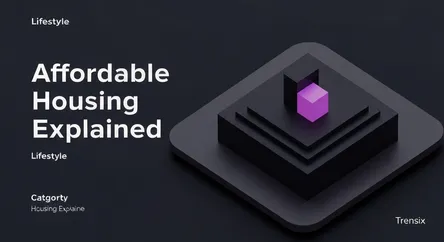Lifestyle
Affordable Housing Explained

Discover what affordable housing means, why it's a critical issue today, and how it impacts communities and individual financial well-being.
What is it?
Affordable housing refers to residential units considered affordable for households with a median income or below. The standard guideline is that housing costs, including rent or mortgage plus utilities, should not exceed 30% of a household's gross income. This encompasses various options like subsidized public housing, rental assistance programs, and privately owned homes with price restrictions. The core objective is to ensure everyone has access to safe and decent living spaces without becoming financially over-burdened, a situation often referred to as being 'housing cost-burdened'.
Why is it trending?
The term is trending due to a widespread housing crisis affecting many parts of the world. Housing prices and rental rates have surged, significantly outpacing wage growth. This disparity is driven by factors like inflation, a limited supply of new homes, and high demand in desirable areas. As a result, finding an affordable place to live has become a major challenge for millions, elevating the issue to a top concern in political debates, social media discussions, and news coverage as communities seek viable solutions.
How does it affect people?
Access to affordable housing profoundly impacts people's quality of life. It provides financial stability, allowing families to allocate funds to other essentials like food, healthcare, and education. This stability is linked to improved health outcomes, better academic performance for children, and greater economic mobility. Conversely, a lack of it can lead to debt, housing instability, homelessness, and chronic stress. For communities, a healthy stock of affordable housing supports a diverse workforce, boosts the local economy, and fosters more inclusive and equitable neighborhoods.